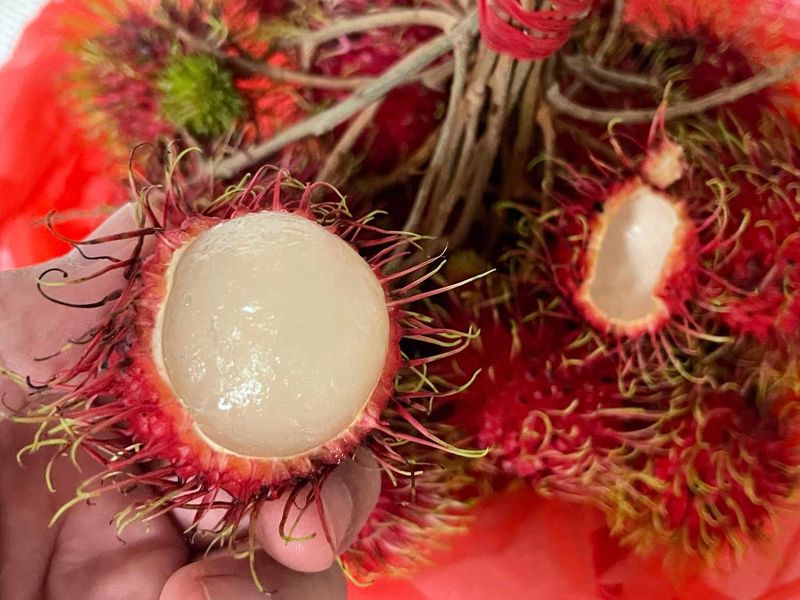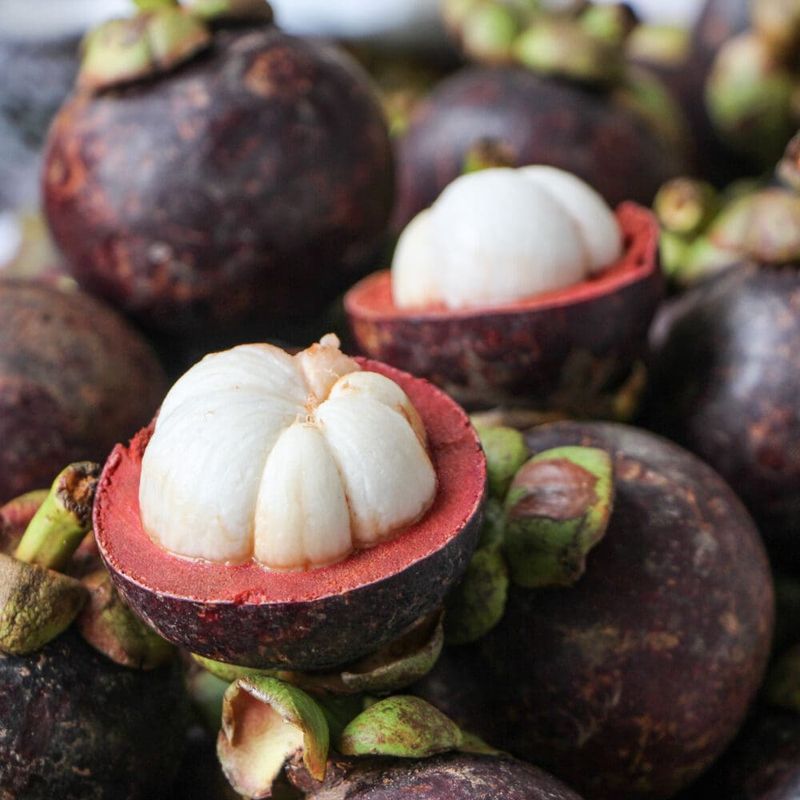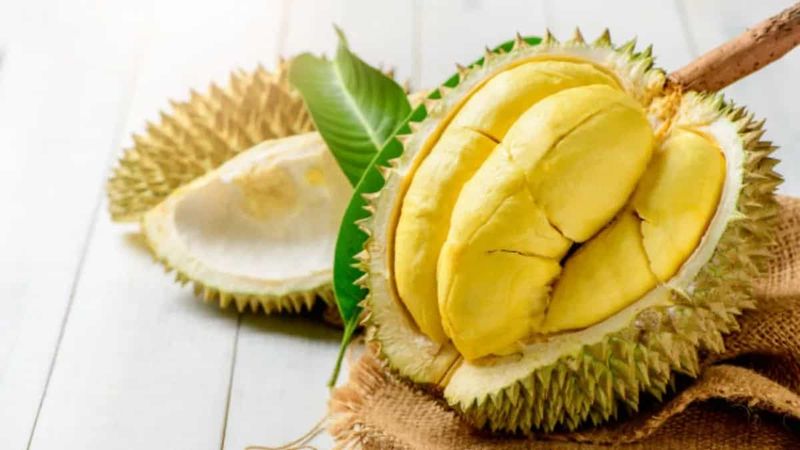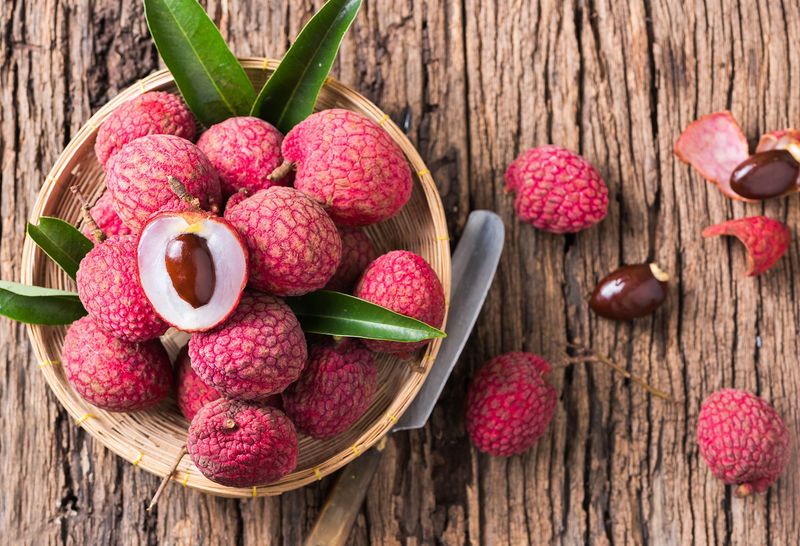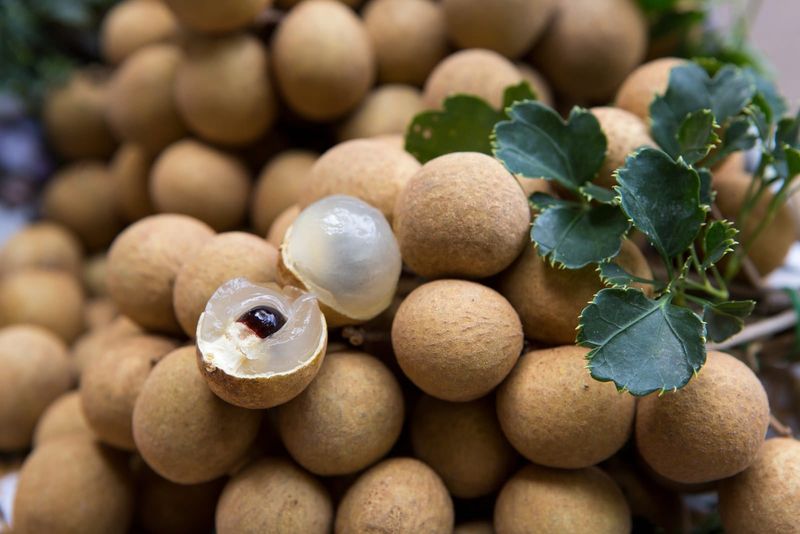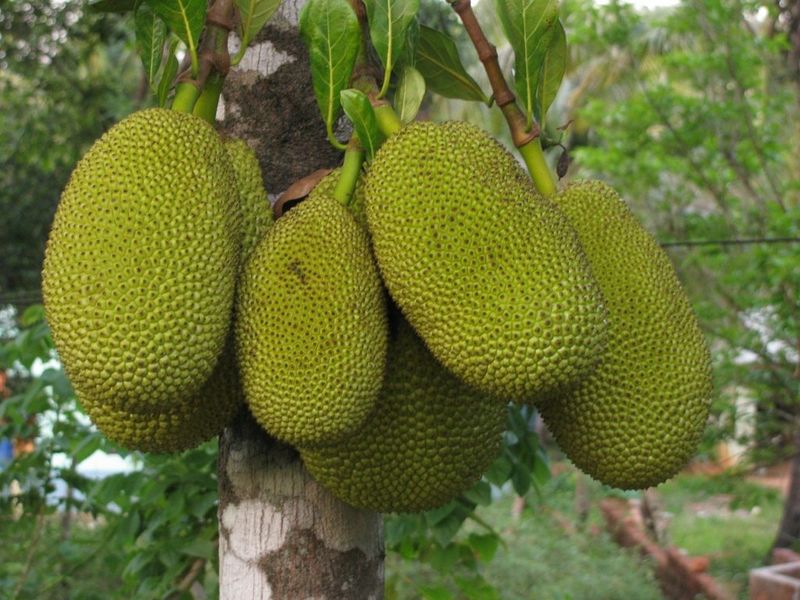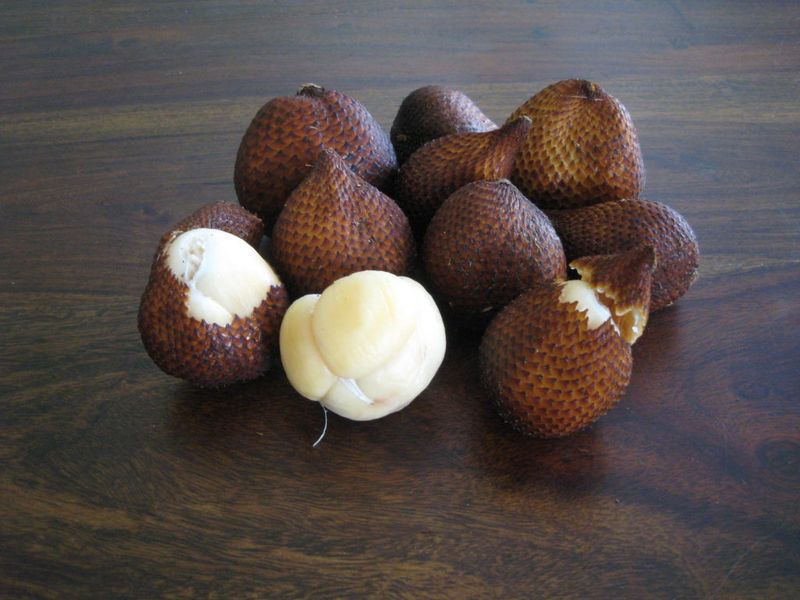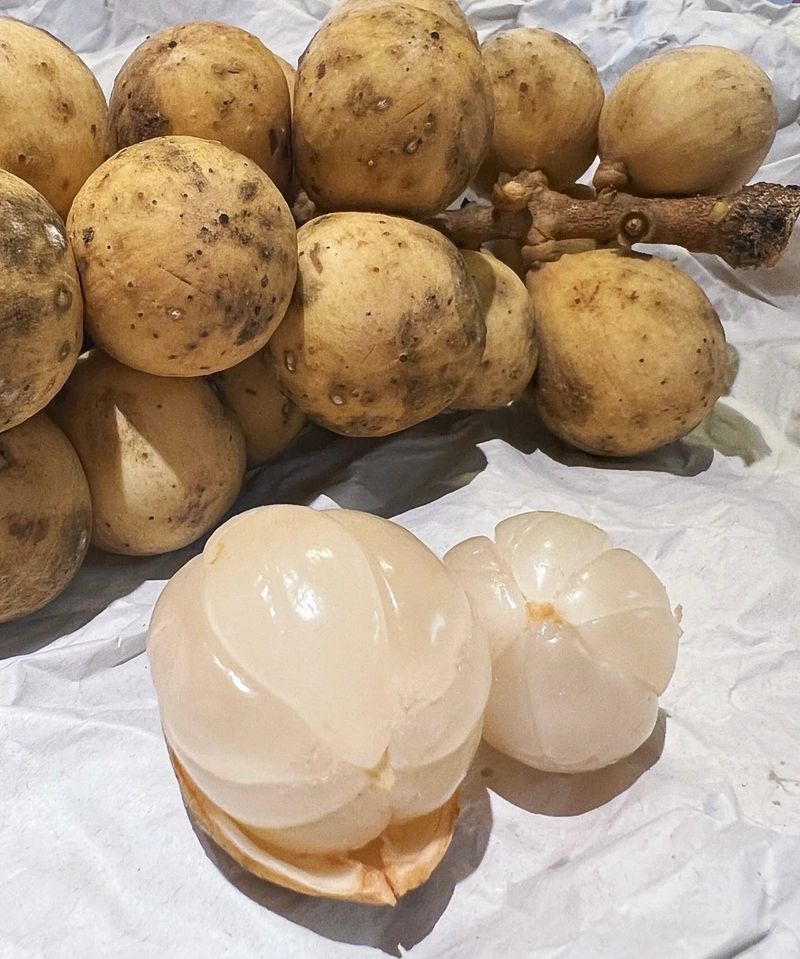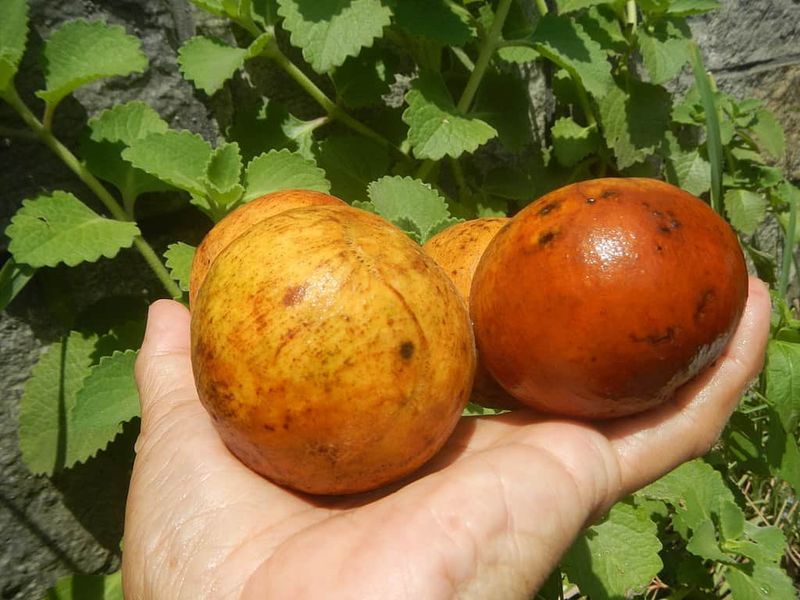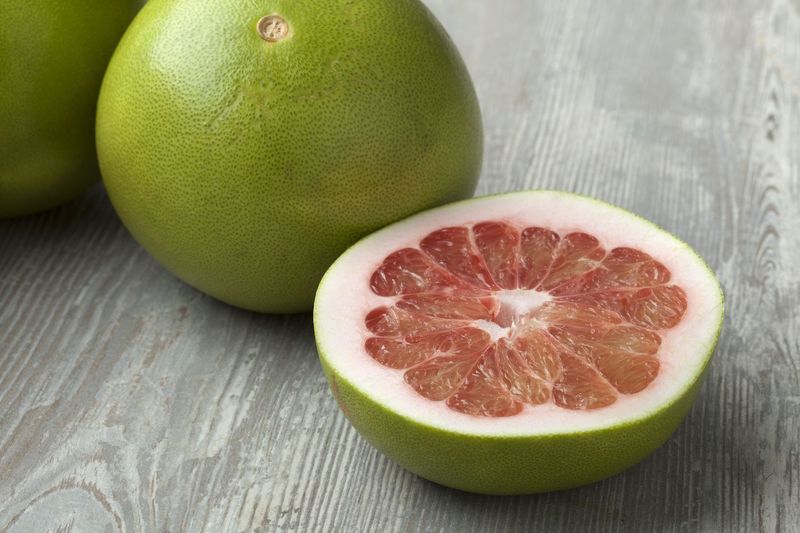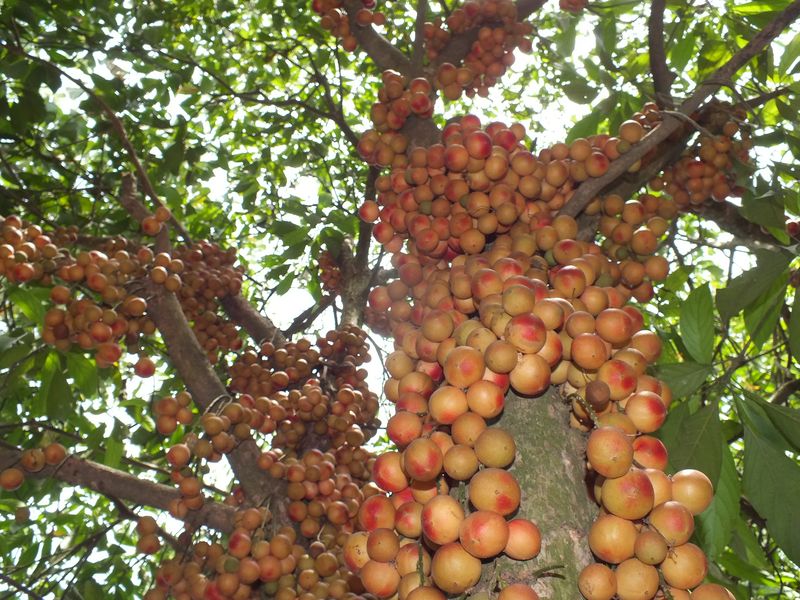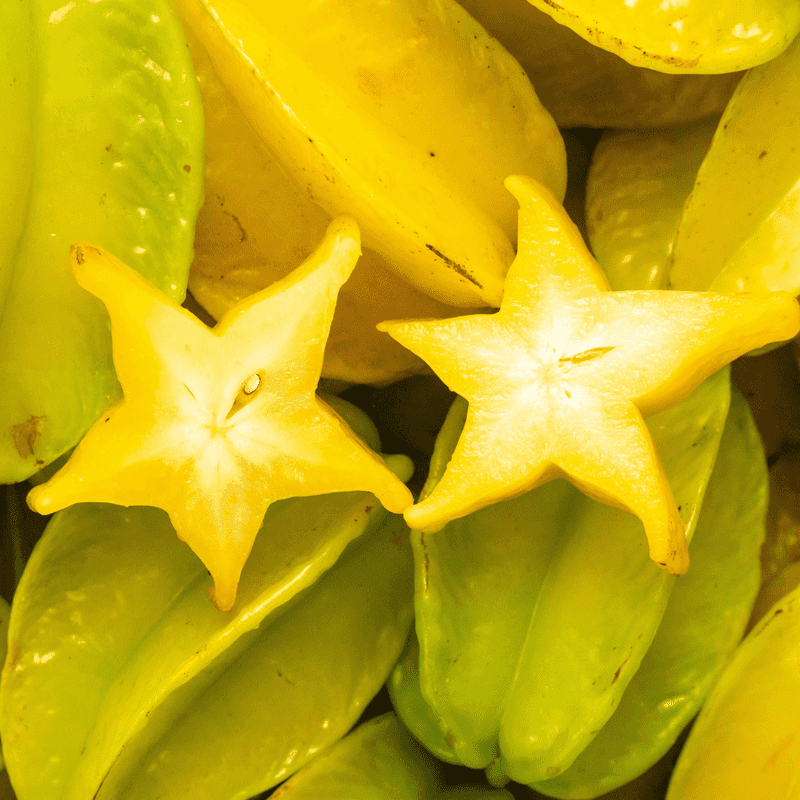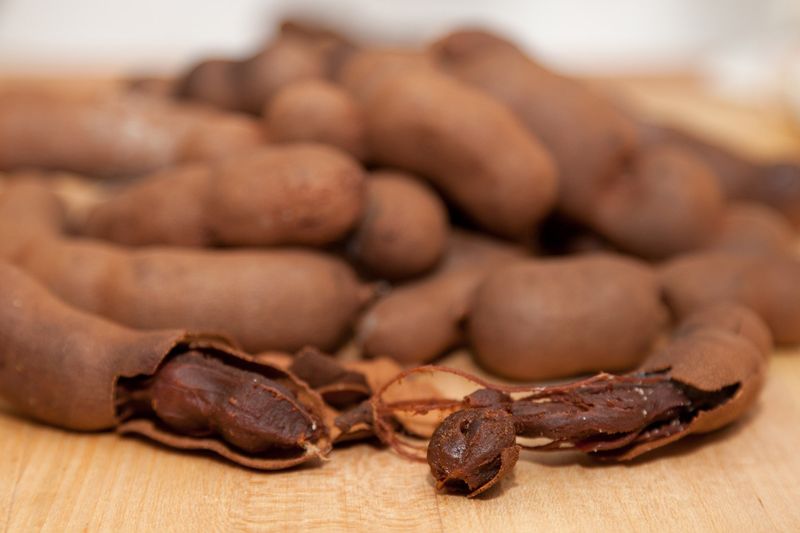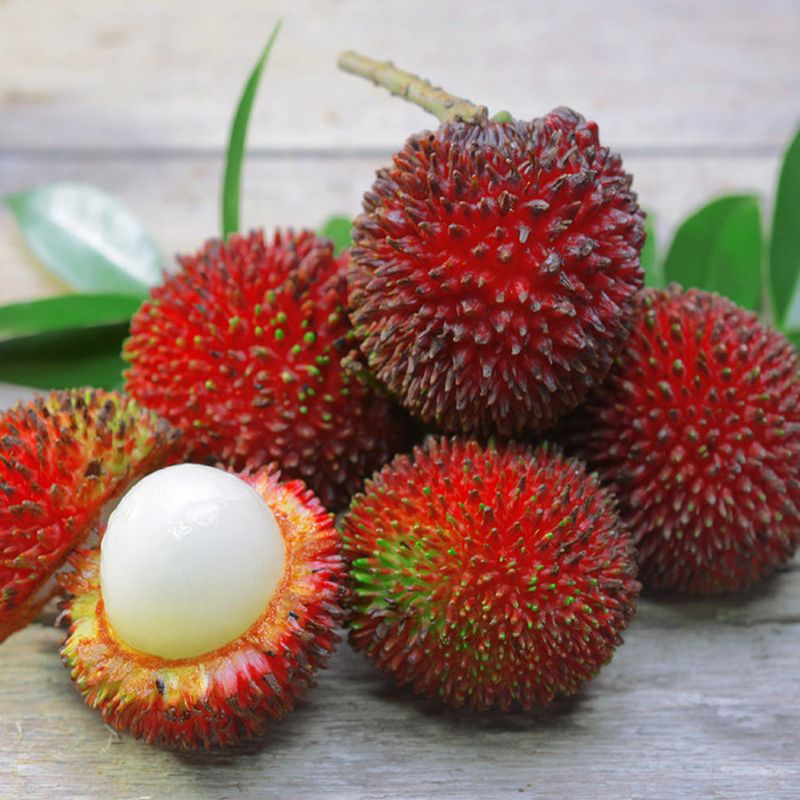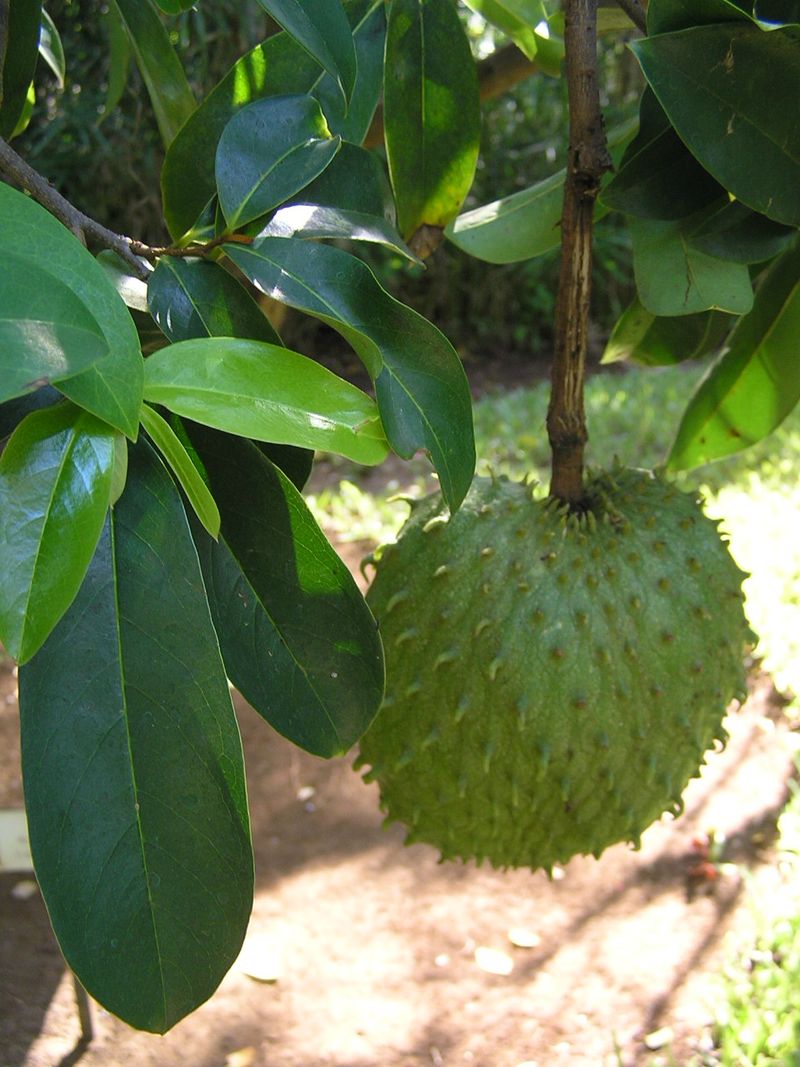Southeast Asia is home to a remarkable variety of exotic fruits that are not only delicious but also packed with nutrients.
These fruits may not be as common in Western grocery stores, but they are definitely worth trying if you ever have the chance.
Let’s explore some of the most intriguing ones you’ve probably never encountered before.
1. Rambutan
Rambutan, native to Malaysia and Indonesia, is a delightful fruit with a unique appearance. Its hairy red shell encases a juicy, translucent interior. The flavor is sweet with a hint of acidity, reminiscent of lychee.
Rambutan trees flourish in the warm, humid climates of Southeast Asia. When selecting rambutans, look for bright colors and firm textures. After peeling, the fruit can be eaten raw or added to desserts.
It’s a good source of vitamin C and antioxidants. Whether on a tropical vacation or visiting an Asian market, rambutan offers a delightful taste of Southeast Asia.
2. Mangosteen
Mangosteen, often referred to as the “queen of fruits,” is cherished for its exquisite flavor. With a thick, purple rind, it encloses segments of juicy, white flesh that taste sweet and tangy.
This fruit grows on evergreen trees in the tropical forests of Southeast Asia. Mangosteen is rich in antioxidants, particularly xanthones, which contribute to its health benefits.
To enjoy, gently press and twist the rind to open. Its refreshing taste can be savored on its own or in fruit salads. A true tropical delicacy, mangosteen promises a burst of flavor with every bite.
3. Durian
Durian, known as the “king of fruits,” is infamous for its strong aroma. Its massive, spiky exterior can be intimidating, but the soft, creamy flesh inside is a beloved delicacy in Southeast Asia.
The taste is a complex mix of sweet and savory. Durian thrives in tropical climates and is commonly found in countries like Thailand and Malaysia. Despite its pungent scent, durian is packed with nutrients, including healthy fats and fiber.
When eating durian, it’s best to find a well-ventilated area. For adventurous eaters, durian offers a unique and rewarding fruit experience.
4. Lychee
Lychee is a small, round fruit with a delicate, floral flavor. Encased in a rough, reddish-pink shell, its juicy, translucent flesh offers a sweet taste reminiscent of roses. Native to China, lychee has found its way to Southeast Asian orchards, thriving in warm climates.
This fruit is often enjoyed fresh, added to drinks, or used in desserts. Rich in vitamin C and antioxidants, lychee is both delicious and nutritious. To enjoy lychee at its best, peel the skin and remove the seed.
It’s a refreshing treat for hot summer days, perfect for picnics and gatherings.
5. Longan
Longan, often called “dragon’s eye,” is a sweet and succulent fruit popular in Southeast Asia. Its smooth, brown shell contains juicy, translucent flesh surrounding a glossy black seed.
Longan trees are commonly found in Thailand and Vietnam, thriving in tropical conditions. The fruit is usually eaten fresh, providing a burst of sweetness with every bite.
Longan is also used in traditional Asian soups and desserts. It’s an excellent source of vitamin C and provides a cooling effect, making it a perfect snack for warm days. Discover the delightful taste of longan, an exotic treat.
6. Jackfruit
Jackfruit is the largest tree-borne fruit, native to the rainforests of Southeast Asia. Its immense size and spiky green exterior make it a unique presence in the fruit world.
Inside, vibrant yellow pods offer a sweet, tropical flavor, similar to a blend of banana and pineapple. Jackfruit is versatile, used in both savory dishes and desserts. It’s rich in dietary fiber and vitamin B6.
In recent years, it has gained popularity as a meat substitute for vegans. Whether eaten raw or cooked, jackfruit provides a delicious and nutritious experience for all to enjoy.
7. Salak (Snake Fruit)
Salak, known as snake fruit, is famous for its distinctive, scaly skin. Native to Indonesia, this fruit has a crisp texture and a sweet, tangy flavor. Its inner flesh is pale and succulent, offering a refreshing taste.
Salak is often eaten fresh, but it can also be used in salads and pickles. It is a good source of vitamin C and dietary fiber. Salak grows on palm trees and is harvested in tropical climates.
To enjoy, peel away the scaly skin and savor the juicy flesh. Salak is a unique addition to any tropical fruit collection.
8. Langsat
Langsat is a small, round fruit with a thin, yellowish-brown skin. Native to Malaysia and Indonesia, it grows in clusters on trees. Inside, the fruit is segmented, with a translucent, juicy flesh that is both sweet and slightly tart.
Langsat is a popular snack in Southeast Asia, often enjoyed fresh. It is rich in vitamins A and C and provides a good source of dietary fiber. The fruit’s unique taste and texture make it a delightful treat.
Langsat offers a refreshing bite, perfect for hot tropical climates, and is loved by locals and tourists alike.
9. Santol
Santol, sometimes referred to as the cotton fruit, is a tropical delight with a thick, yellow rind. Its interior contains soft, white pulp with a sweet and sour flavor. Native to the Philippines and Thailand, santol is typically eaten fresh or used in cooking.
It is rich in dietary fiber and vitamin C. Santol can be enjoyed by peeling away the rind and sucking on the juicy pulp, which is often a favorite pastime in Southeast Asia. Its unique taste and texture make it a fascinating addition to any fruit lover’s collection.
10. Pomelo
Pomelo is the largest citrus fruit, resembling a giant grapefruit. It has a thick, pale green or yellow rind and juicy, pink to pale yellow flesh inside. Native to Southeast Asia, pomelo is enjoyed for its sweet and slightly tart flavor.
It’s a refreshing snack and a popular ingredient in salads. Pomelo is rich in vitamin C and antioxidants, offering various health benefits. To enjoy, peel away the thick rind and separate the segments.
Its juicy, succulent taste provides a delightful citrus experience, perfect for warm weather and tropical settings.
11. Baccaurea
Baccaurea, commonly found in Malaysia and Indonesia, is a small, round fruit with a thin, colorful skin. It boasts a juicy, translucent interior with a sweet and tangy taste. Baccaurea fruit grows in clusters and is typically eaten fresh.
It is a good source of vitamins and minerals, contributing to its popularity as a healthy snack. The fruit’s vibrant skin and refreshing flavor make it an appealing choice.
Whether enjoyed alone or added to fruit salads, baccaurea offers a burst of tropical goodness and a taste of Southeast Asian culture.
12. Starfruit (Carambola)
Starfruit, or carambola, is aptly named for its star-like shape when sliced. This fruit has a crisp texture and a juicy, mildly sweet flavor.
Native to Southeast Asia, starfruit is often used in salads, drinks, and desserts. It’s rich in vitamin C and antioxidants, making it a healthy choice. The fruit ranges in color from green to bright yellow as it ripens.
To enjoy starfruit, slice it crosswise to reveal its star shape and eat it fresh. Its unique shape and refreshing taste make it a popular choice in tropical cuisine.
13. Tamarind
Tamarind is a tangy fruit encased in a brown, pod-like shell. Its sticky, brown pulp offers a sweet and sour taste, often used in Asian cuisine. Tamarind trees thrive in tropical climates, particularly in Thailand and India.
The fruit is a key ingredient in sauces, candies, and beverages, imparting a unique flavor. It’s also used in traditional medicine for its health benefits. To enjoy, remove the shell and savor the pulp.
Tamarind’s versatility and distinct taste make it a staple in Southeast Asian kitchens, adding a zesty touch to dishes.
14. Pulasan
Pulasan is a lesser-known relative of the rambutan, with a similar appearance. Its dark red, spiky skin protects a juicy, white interior. Pulasan offers a sweet, floral flavor, enjoyed fresh or in desserts.
Native to Malaysia and the Philippines, this fruit thrives in tropical environments. Pulasan is often compared to lychee and rambutan, but with its own distinct taste. It’s a good source of vitamin C and antioxidants.
To enjoy, peel away the spiky skin to reveal the juicy flesh. Pulasan is a hidden gem among Southeast Asian fruits, promising a delightful taste experience.
15. Soursop
Soursop, also known as graviola, is a tropical fruit with a distinctive taste. Its green, spiky exterior hides creamy, white flesh with a tangy, sweet flavor.
Soursop is native to the tropical regions of Southeast Asia and is celebrated for its delicious taste and potential health benefits. The fruit can be eaten fresh or used in smoothies, juices, and desserts.
Rich in vitamin C and fiber, soursop is both nutritious and tasty. To enjoy, slice the fruit and remove the seeds before eating. Soursop offers a unique and refreshing tropical flavor.

